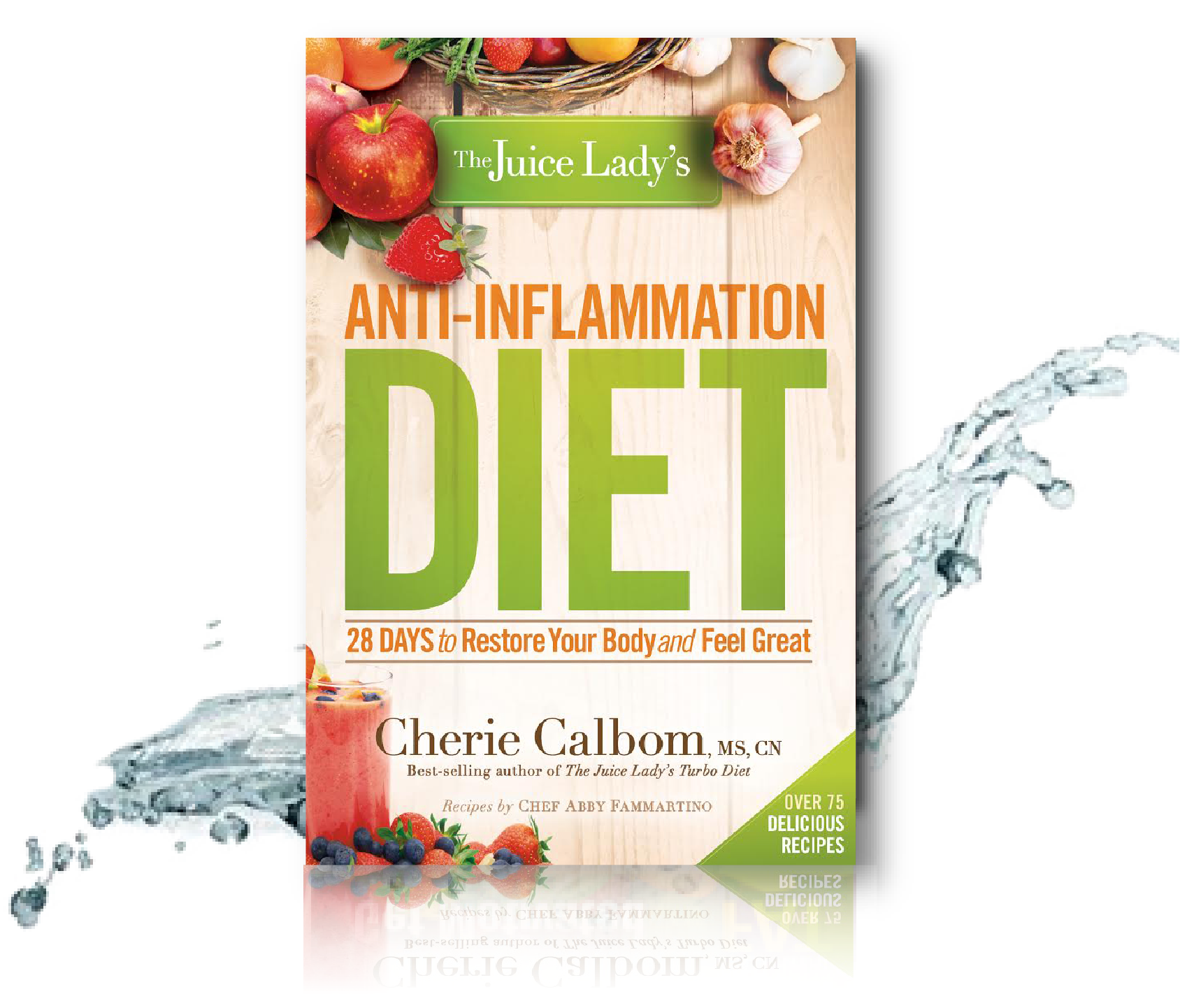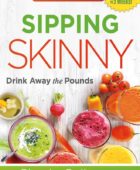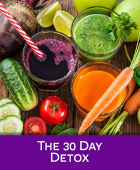Think RED!

Red Juices for Lymphatic System, Adrenals, Kidneys and Heart
The color red (and purple) is associated with the adrenal glands, the lymphatic system and the kidneys. Red foods also nourish the heart. When you think of red produce (tomatoes, berries, cherries, pomegranate, beets and cranberries), the nutrient that stands out is lycopene, which is a carotenoid that is a powerful antioxidant associated with reduced cancer risk, especially prostate cancer. It is also associated with reduced risk of heart attacks. Many red fruits and vegetables are also rich in vitamin C, beta-carotene, folate, and flavonoids, which have been shown to reduce inflammation. Cranberries are a good source of tannins, which prevent bacteria from sticking to cells; hence they are important in fighting infections. They are the reason cranberry juice is a standard treatment for bladder infections.
I want to focus in on the lymphatic system in today’s newsletter because it’s a system we don’t think much about. Rarely does anyone in the medical field bring it up unless there’s a problem such as lymphoma. But lymphatic system health is something we should all be aware of and work to maintain.
The lymphatic system is a drainage system with a network of fluid, organs and vessels that removes cellular debris, proteins, foreign bodies, bacteria, viruses, toxins, and excess fluid from tissue spaces. Since it has no pump like the heart, the lymphatic system can become congested, especially with a sedentary lifestyle, because it is exercise that keeps it moving. It can get clogged up and you’ll never know it until something gets your attention with a huge wake-up call. A clogged lymphatic system can weaken your immune system and stress your other pathways of elimination. It can contribute to everything from cellulite to cancer. See my e-book The Cellulite Cure.
Symptoms that You May Have Lymphatic Congestion
- Rings are tight on your fingers
- Soreness and/or stiffness in the morning
- Tired/fatigued
- Bloating/water retention
- Skin itches
- Weight gain, especially around the mid-section
- Swollen glands
- Impaired immunity
- Brain fog
- Breast swelling or soreness with each cycle
- Dry skin
- Mild rash or acne
- Mild headaches
- Elevated histamine and irritation due to environmental allergens
- Occasional constipation, diarrhea and/or mucus in the stool
If you have any of these symptoms, or even if you don’t, I recommend a lymphatic system cleanse. (We don’t usually wait to change the oil in our car until we have symptoms.) In addition to red juices, which are very supportive of the lymphatic system, increase your water intake to a minimum of 8 glasses of purified water a day. Drink at least 3 glasses of veggie juice daily; make some of that red juice. Start your day with warm water and some lemon with a dash of cayenne pepper. Get the Lymph Rejuvenator or get the Internal Cleanse Kit with the free Colon Cleanse Kit. This has the Lymph Rejuvenator in the kit. I also recommend that you check out the Lymphasizer (Swing Machine). It is very effective at moving the lymph.
Today’s Juice Recipe
Red Sunrise

Drinking beet juice may help to lower blood pressure in a matter of hours. One study found that drinking one glass of beet juice lowered systolic blood pressure by an average of 4–5 points.
- 1 green apple
- 1/2 small beet with leaves
- 1 cucumber, peeled if not organic
Cut produce to fit your juicer’s feed tube. Juice ingredients and stir. Serves 1.
From The Juice Lady’s Guide to Fasting
Read MoreDairy Free Cream of Asparagus Soup & Kale Salad
Dairy Free Cream of Asparagus Soup & Kale Salad
Inflammation Shown By the CDC as a Major Cause if Illness and Disease
If you have suffered with ill health, I highly recommend that you follow the anti-inflammation diet. Many people have been healed and lives changed by reducing inflammation in their body. The recipes that follow are from my new book The Juice Lady’s Anti-Inflammation Diet. As you follow this program, you should notice that your health greatly improves. You will also lose weight if you need to.
Basic Raw Kale Salad With “Dairy Free” Cream of Asparagus Soup
Serves 4–6
Basic Raw Kale Salad
1 cup shredded carrot, or snap peas (when in season)
2 cups radishes, sliced
1 clove garlic, minced
6 cups kale, chopped into bite-size pieces (2 bunches)
1-inch-piece of ginger, minced (optional)
Sea salt, to taste
2 Tbsp. lemon juice
1 Tbsp. extra-virgin olive oil
Combine all ingredients in a large bowl. With clean hands, massage the vegetables as if you are squeezing water out of them. Work the vegetables at least 15 times. After 10 minutes, work the vegetables another 15 times. Season to taste and enjoy many variations on this theme!
Fun Variations:
*Add sesame seeds and sesame oil at the end, or chopped cashews for crunch.
*Reduce sea salt to 1/2 teaspoon, and add 1 teaspoon umeboshi plum paste.
*Add golden raisins soaked in apple juice and pumpkin seeds for a kale “granola”
Shopping List
1 clove garlic
1-inch ginger
2 large bunches of kale (green
or red or lacinato)
1 lemon
1 large bunch radishes
1 cup snap peas or 3 carrots
Check the Pantry
Extra-virgin olive oil
Sea salt
“Dairy Free” Cream of Asparagus Soup
Serves 6
1/4 cup extra-virgin olive oil
2 cloves garlic, chopped
1/2 cup diced onion
1/2 Tbsp. green curry paste (optional)
5 cups fresh asparagus, (or frozen) cut into 1-inch pieces (2 bunches)
4 cups rutabaga, one inch dice
4 cups vegetable stock, to cover
1/2 bunch parsley, roughly chopped
11/2 tsp. sea salt (or more to taste)
Freshly ground black pepper, to taste
1–2 cups coconut milk, or to taste (hemp or plain almond milk can be substituted)
Fresh water, as needed
Heat the olive oil in a large soup pot set over medium heat and stir in the garlic, onion, and curry paste (this seasons the oil). Add in the cut asparagus and rutabaga. Add just enough stock to cover the vegetables—not too much, you can always thin the soup later if you need to. Add the chopped parsley. Season with sea salt and fresh pepper, to taste.
Bring the vegetables to a high simmer. Cover the pot, and reduce the heat to a medium simmer. Cook for 20 minutes or so, until the rutabaga are fork tender. Remove the pot from the heat. Use an immersion blender to puree the soup. Return the pot to the stove and add in the coconut milk. Stir and heat through gently (don’t boil the pureed soup). Taste test and adjust seasonings.
Serve with a sprinkle of fresh minced parsley or a spoonful of plain vegan yogurt or vegan sour cream.
Shopping List
2 bunches asparagus
2 cloves garlic, chopped
1 medium yellow onion
1 bunch parsley
3 lb. rutabaga
Check the Pantry
Black peppercorns
Coconut milk
Extra-virgin olive oil
Green curry paste (optional)
Sea salt
From The Juice Lady’s Anti-Inflammation Diet
Read More








